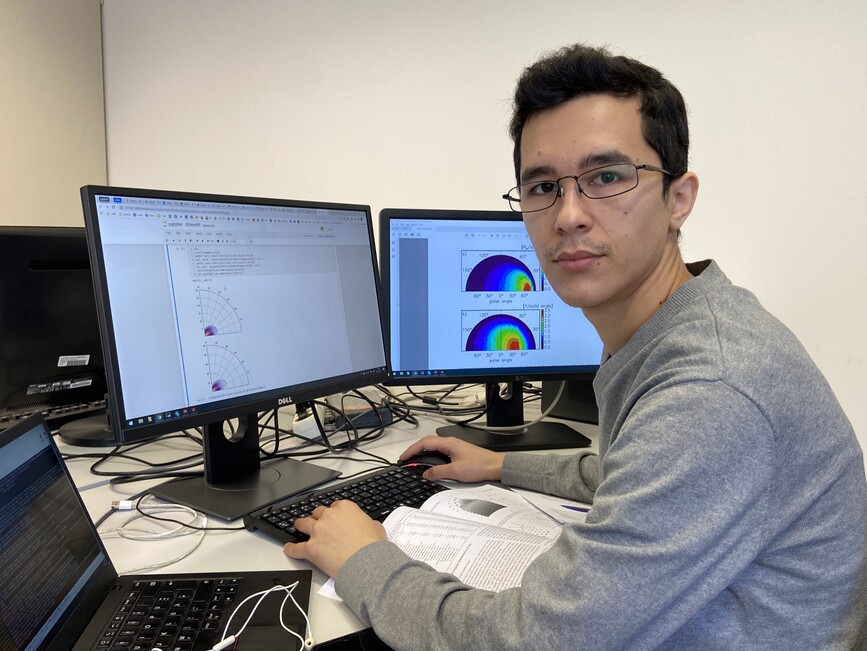What is the topic of your Ph.D. thesis?
“Molecular Dynamics of Surface-Plasma interactions with Machine Learned Potential Energy Functions”.
What is the focus of research?
We are investigating the behavior of plasma-surface interfaces with respect to the processes taking place in a fusion device. The plasma is composed of hydrogen isotopes and trace particles as well as of atoms and molecules sputtered from near and far surfaces. In our investigations the surfaces consist of beryllium and tungsten and their alloys. Molecular dynamics simulations can model the surface degradation caused by a stream of impinging plasma atoms. Our research includes method development regarding quantum chemical scattering algorithms, improved integrators, optimization of the neural-network approach and other features of these computationally demanding non-standard simulations.
What is the benefit for fusion research?
Erosion of plasma-facing materials (PFMs) that occurs under impact of energetic plasma particles determines the lifetime of wall materials. In turn, the composition of the plasma is also altered, changing its energy balance and ultimately its burning time. One must know the mechanisms of these processes to be able to obtain rates and kinetic parameters on a microscopic scale.
With our steady-state atomistic molecular dynamics simulations on Deuterium, Tritium, Argon etc. impinging on Beryllium, Tungsten and other surfaces we can calculate these parameters. For example, the dependence of the sputtering yield on the angle and energy of the incoming particle and on the surface temperature can be established. These data are very much in demand in the material science and fusion research community because they constitute a part of the necessary input for non-atomistic macroscopic simulations to predict the behavior of walls and plasma of a fusion device.
What are the biggest challenges?
In the low-energy regime up to a few electron volts, the quantum nature of plasma particles, particularly hydrogen isotopes, must be taken into account, while in the high energy regime classical simulations can describe the system. The main challenge there is that the interaction potentials must describe molecules, interfaces as well as the solid state and the transition between them equally well. The huge multidimensional parameter space that is spanned by energy, geometrical parameters, temperature and so on is also a big practical challenge.
What plans do you have for your future? What will you be doing in five years? Would you like to continue research or are you going to work in the industry?
I would like to continue my research work after defending my PhD thesis. I have a strong interest in machine learning and big data science, especially where these techniques have prospects in fusion research.
What was your motivation to write a fusion relevant Ph.D. thesis? What fascinates you about nuclear fusion?
I really admire the greatness of the idea and the attempt to recreate the energy that feeds big stars and which would mean the end of needing to use fossil energy sources. In our time, we are already close to success and I am very pleased that I can be part of such a great endeavor.
